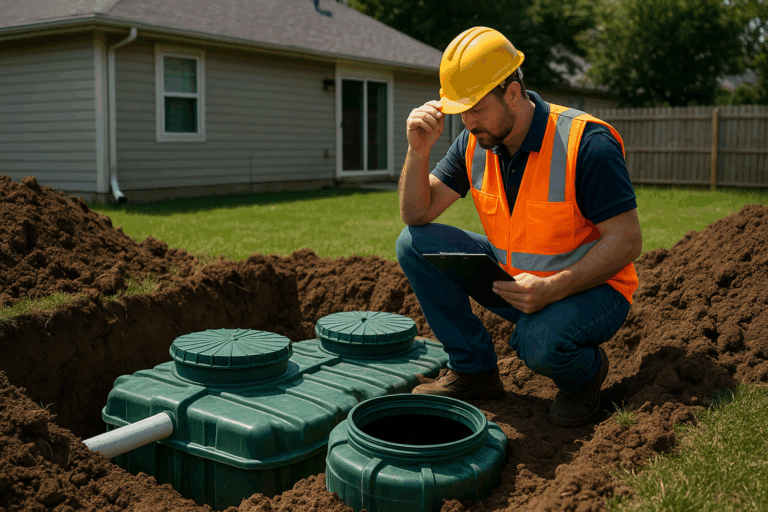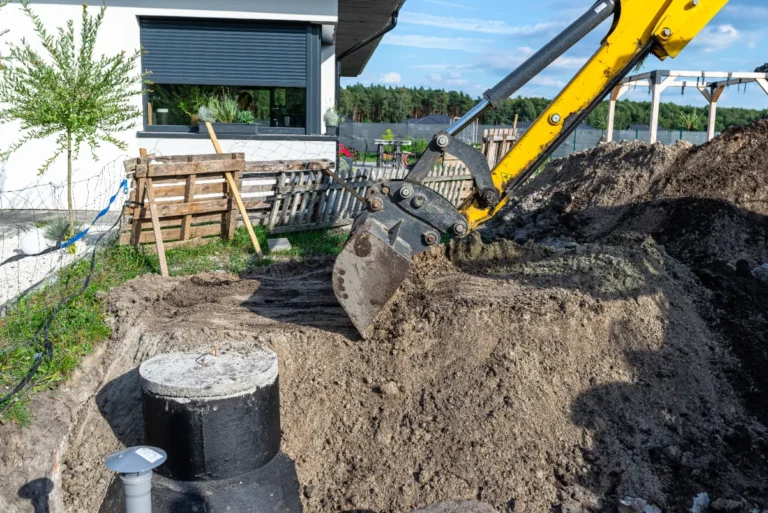- Phone Number: (971) 370-9544
- Email: overflowseptic25@gmail.com
- Location: Silverton, OR
Septic Tank Installation Guide: What You Need to Know

Septic tank installation involves placing an underground tank designed to collect and treat wastewater from your home. The tank separates solids from liquids, allowing treated water to flow safely into the drain field. Proper septic tank installation is crucial to prevent leaks, backups, and environmental hazards.
This process includes site evaluation, excavation, tank placement, and connection to your home’s plumbing system. Each step requires careful attention and expertise to comply with local codes and prevent future problems.
Key Steps in Septic Tank Installation
Site Evaluation and Permits for Septic Tank Installation
Before installation, a professional must evaluate your property’s soil and drainage conditions. This evaluation determines the best location for the tank and drain field. Obtaining permits from local authorities is also necessary to ensure the installation complies with regulations.
Soil tests help assess permeability, which affects how well the drain field will absorb wastewater. The tank placement must be accessible for maintenance while being far enough from water sources and property lines.
Excavation and Septic Tank Placement
After approval and permits are obtained, excavation begins. Heavy machinery digs a hole large enough for the septic tank. The hole’s depth and size depend on the tank type and capacity needed for your household.
Once the hole is ready, the tank—usually made of concrete, fiberglass, or plastic—is lowered into place. It’s crucial to position the tank correctly, ensuring it’s level and stable to prevent shifting over time.

Connecting the Septic Tank to Plumbing and Drain Field
The next step is to connect the tank to your home’s plumbing system. Pipes must be sealed tightly to prevent leaks. From the septic tank, treated water flows to the drain field, where it disperses safely into the ground.
Proper installation of the drain field ensures the system’s long-term performance and prevents contamination of groundwater or nearby water bodies.
Why Professional Septic Tank Installation Matters
DIY septic tank installation is not recommended. Professional contractors understand local codes, have the right equipment, and can ensure the system is installed safely and efficiently. Poor installation can lead to costly repairs, health risks, and property damage.
Hiring experienced professionals ensures your septic tank meets all safety and environmental standards.
Maintenance Tips After Septic Tank Installation
After installation, regular maintenance keeps your septic system running smoothly. Schedule inspections every 1-3 years and pump the tank as needed. Avoid flushing harmful chemicals or non-biodegradable items down the drains.
Keep the area around your septic tank clear and avoid driving heavy machinery over it to prevent damage.
Schedule Your Septic Tank Installation Now
Ready for expert septic tank installation services? Contact Overflow Septic LLC today for reliable installation and maintenance. Stay informed by visiting our blog page.
